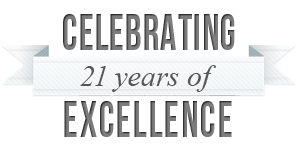Make your curiosity contagious, because a learning organization stays competitive. We often assume that our external actions and achievements—degrees acquired, mentors engaged, projects completed—pave the way for our success. Yet, as I spend more time focusing on the dynamics of effective leadership, I see that attaining my career goals is rooted in my ability to stay curious and convey a sense of “the possible” throughout my organization.
An unquenchable thirst for knowledge keeps me fresh and relevant in a world that is in the midst of rapid technological evolution. When I am out running, I think about what competitors are doing, what customers are saying, and how innovations could help my business. I listen to energy industry-related podcasts on my commute and forward news articles to my team on the weekend.
There have been times in my career when I needed to dig deep to find my curiosity about a particular position or assignment. Yet, once I discovered an aspect of the job that encouraged me to ask questions and seek answers, I became far more excited to get into the office. It then became easier to speak passionately about my responsibilities and stand out in a crowd of people only interested in work during business hours.
When a leader is curious down to her core, it becomes obvious to everyone around her, and that curiosity becomes contagious. By focusing on breakthroughs, and demonstrating a true excitement for rethinking everything, I encourage my colleagues to be curious, ask questions, and do research outside our office walls. As a result, they want to know more and are able to stay competitive. In this work environment, engendering curiosity makes it easier to introduce new ideas, combat the natural resistance to change, and create an environment for doing remarkable things.
Jill’s Advice to Young Women Starting Careers
Crisis creates opportunities for growth. Be a source of strength, not a cause of stress. During the Northeast blackout of 2003, I was a junior engineer at a New York utility, compiling restoration status updates on the nightshift. With more than 50 million people without power, I observed firsthand what it takes to handle a crisis effectively.
As I quickly came to understand from dealing with intense pressure, emergency situations have dramatically different effects on people. Some people raise their voices and take inefficient action. Yet, I also observed calm and confident managers effectively leading their teams through challenges, and achieving seemingly impossible results.
Consequently, I always strive to be the calm voice in a storm. I might need to deal simultaneously with a major equipment outage, personnel issue, and a looming environmental hazard, while also working with news media. I take a deep breath and make an effort to project an image of control, even if I am fighting back a million different “what-ifs” below the surface. When I encounter a new challenge that threatens my cool demeanor, I think back to the 2003 Northeast blackout, and my current problem doesn’t seem as bad in comparison to what energy company leaders faced during those few frenzied days.








Wow!!
I love you!
I’m so proud of you!
mumsy
Dear Jill,
I am so glad that Kim sent me your write up. CONGRATULATIONS! You deserve the notoriety and I am glad that your mother-in-law sent this to me. I think I can benefit from your message and appreciate reading it. Thank you!
Congratulations again!
Jane